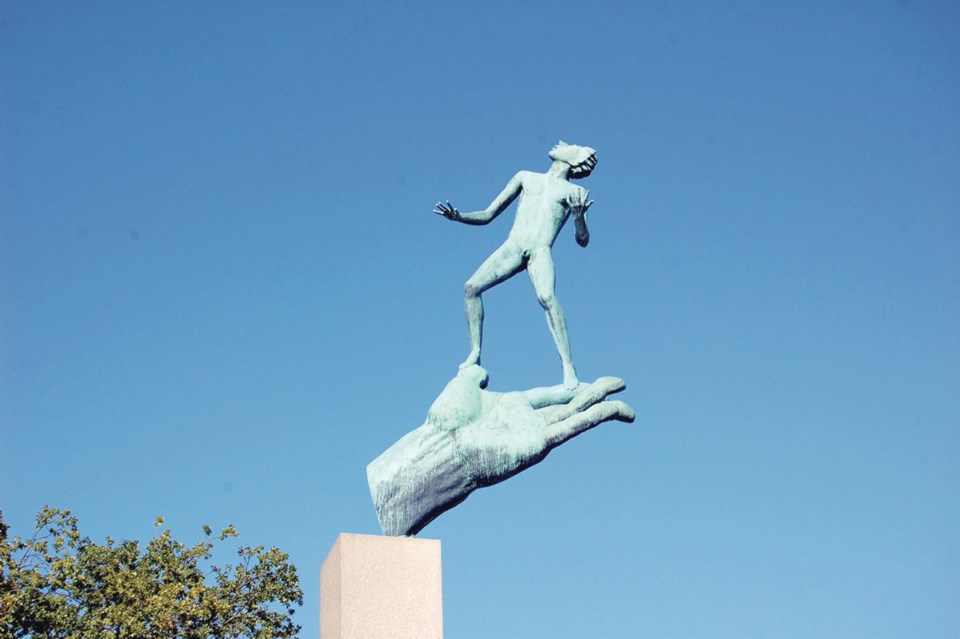Stockholm’s inviting medieval centre, leafy parks, top-notch sights and exciting urban scene make the city a highlight of any Scandinavian vacation. But don’t let Stockholm’s charms blind you to the variety of fine day trips at the city’s doorstep. Within an hour or so of the Swedish capital, you can bask in the opulence of a royal palace, swing through the home and garden of Sweden’s greatest sculptor, see ancient rune stones in the country’s oldest town, hang with students in a stately university city or island-hop through Stockholm’s archipelago.
West of Stockholm, Drottningholm Palace is Queen Silvia’s 17th-century summer castle and current royal residence. It is a lovely place to stroll the sprawling gardens and envision royal life. Visitors tour two floors of lavish rooms, filled with art that makes the point that Sweden’s royalty is divine and belongs with the gods.
I find the tour at Drottningholm Court Theatre even better than the palace’s. Built in the 1760s by a Swedish king to impress his Prussian wife (who considered Sweden dreadfully provincial), the theatre has survived the ages. Still intact are the Baroque scenery and hand-operated machines for simulating wind, thunder and clouds. The pulleys, trapdoors and contraptions that floated actors in from the sky aren’t so different from devices used on stages today. Another fine destination is Millesgården, dramatically situated on a bluff overlooking Stockholm’s harbour in the suburb of Lidingö. The 20th-century sculptor Carl Milles lived and worked in this villa and lovingly designed the sculpture garden for the public. Milles wanted his art — often Greek mythological figures — to be displayed on pedestals “as if silhouettes against the sky.” Milles also injected life into his work with water, which splashes playfully amid the sculptures.
Twenty years ago, I visited the historic town of Sigtuna (north of Stockholm) and wrote it off as a tourist trap. But I recently revisited the town — and my original assessment of it. Sigtuna’s great. Established in the 970s, it’s the oldest town in Sweden — and the cutest. Visitors enjoy a lakeside setting and an open-air folk museum of a town, with ruined churches and a cobbled lane of 18th-century buildings.
Sigtuna is dotted with a dozen rune stones. The memorial stones are carved with messages in an Iron-Age language. Most have a cross, indicating that they are from the early Christian era (11th century). I even have a favourite stone here. Its inscription translates as: “Anund had this stone erected in memory of himself in his lifetime” — showing that his rune carver had some personality and, perhaps, that Anund had no friends.
North of Sigtuna, but still just an hour from Stockholm, is Uppsala, the fourth-largest city in Sweden. It’s known for its historic cathedral, venerable university and as home to Carl Linnaeus, the father of modern botany.
Uppsala’s cathedral, long the seat of the Church of Sweden, boasts a soaring Gothic nave and an even taller space at its transept, where centuries of monarchs were crowned. Side chapels hold treasures that include the relics of St. Erik and the tomb of King Gustav Vasa.
The cathedral gazes across a square at the Gustavianum museum, housing a collection of Viking artifacts, a cabinet of miniature curiosities, the first thermometer Anders Celsius made according to his own scale, and an anatomical theatre — a temple-like room where human dissection was practised before student audiences. Nearby are the Linnaeus Garden and Museum, where the botanist studied 3,000 species of plants and developed a way to classify the plant kingdom.
On a warm, summer day, nothing beats a ferry trip through Stockholm’s archipelago, a playground of thousands of islands stretching 130 kilometres from the city. Ferries serve more than 100 islands, often starting with Vaxholm, the gateway to the archipelago. This popular destination has a quiet and charming old town and well-preserved fortress off its busy harbourfront. The ramparts remain, manned not by soldiers but by sun worshippers.
On Vaxholm, my favourite lookout post is the Hembygdsgården Café. The coffee and pastry break is a Swedish ritual — embraced with all the vigour of a constitutional right.
Farther from the city is the isle of Grinda, a car-free and largely forested nature preserve laced with walking paths, ringed by beaches and dotted with granite slabs smoothed by glaciers. There’s no real town here, but the island offers a few hotels, a café on the marina and a busy ice cream stand.
From royal palaces to a sculptor’s garden, lazy islands to towns big and small, the area around Stockholm has something for all.
Rick Steves (ricksteves.com) writes European guidebooks and hosts travel shows on U.S. public television and public radio. Email him at [email protected] and follow his blog on Facebook.



